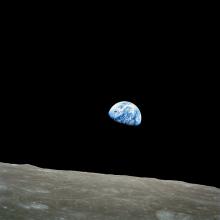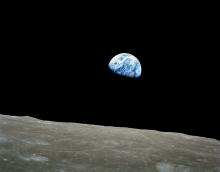Listen to today's episode of StarDate on the web the same day it airs in high-quality streaming audio without any extra ads or announcements. Choose a $8 one-month pass, or listen every day for a year for just $30.
You are here
Dimmer Earth
A barely there crescent Moon just peeks into view during tomorrow’s dawn twilight. You need a clear horizon to spot it.
If the timing is right, though, you might see the entire lunar disk. The part that’s dark isn’t all that dark at all — it’s lit up by earthshine — sunlight reflecting from an almost-full Earth. Earth is bigger and more reflective than the Moon, so a full Earth is a few dozen times brighter than a full Moon.
But it’s not quite as bright as it used to be. A recent study found that Earth’s albedo — the measure of how much light it reflects — has dropped in recent years.
Researchers used telescopes in California to measure earthshine on the Moon from 1998 to 2017. They also measured changes in Earth’s brightness recorded by weather satellites. They found a decrease in Earth’s albedo of about half a percent over that period. Most of the change came in the last few years.
The scientists say the main culprit is a decrease in low cloud cover over the eastern Pacific Ocean — a result of Earth’s changing climate. Clouds reflect more light than the ocean does, so without them, that region has gotten darker. And that could contribute even more to climate change. Because clouds reflect a lot of sunlight, they keep the surface cooler. Without them, that region of the Pacific Ocean should absorb more solar energy — making both the ocean and the rest of the planet a little warmer.
Tomorrow: a giant seagull.
Script by Damond Benningfield





